By Jon Clarke and Nicola Cowell
HE had been on his annual summer holiday with his girlfriend and two small children, Jake, aged three, and Jasmine, nine months. Over to attend a friend’s wedding the following weekend, John O’Neill, 41, had been having a quiet drink with his girlfriend Maxine and friends in Coco’s Bar, in Benalmadena, when all hell broke lose.
Seeing a fight break out his natural instinct was to jump in and break it up. But what the Irish builder couldn’t know was that one of the men he helped to hold back was a dangerous figure, wanted by police in the UK for kidnapping and robbery.
Bar staff ordered the man to leave the premises, but within minutes he had returned with a .38-calibre pistol and indiscriminantly fired off half a dozen shots in and around the bar, one of which hit Mr O’Neill in the back and killed him.
Police are now on the hunt for Scouser, Darren O’Flaherty, 35, who they suspect of carrying out the shooting.
Sadly the incident was anything but rare on the Costa del Sol, which has seen dozens of similar gangland-style shootings – many reported in the Olive Press – over the last few years.
Often dubbed the ‘Costa del Crime’ back home in the UK, just days earlier a 33-year-old British man was lucky to survive after being shot three times through the window of his Mijas home as he watched TV.
Police discovered an arsenal – including explosives and grenades
Equally disturbing was the gangland-style execution of 26-year-old Briton Dan Smith, who was killed at point blank range outside The Lounge Bar in Mijas, in June.
He was allegedly shot four times by an Irish gang member, known as ‘Lucky’, after a row over a girl. He warned Smith that he would shoot him and left the bar, only to return 20 minutes later on a motorbike to carry out his cold-blooded threat.
When the 27-year-old Irish gangster was arrested two days later, police discovered an arsenal of weapons – including explosives, grenades and fake passports – at his isolated home up in the hills near Coin.
It soon emerged that he might have had links to the IRA and was a member of one of Ireland’s most notorious gangs.

His arrest was the start of a police clampdown, which was to see the capture of no less than 36 men accused of being a part of the infamous Irish gang run by feared enforcer Christopher ‘Christy’ Kinahan, based out of Dublin.
In one of the largest police operations of its kind, more than 750 police officers in Spain, Ireland and the UK, closed down the multi-million euro operation of Kinahan in the space of two months.
Operation Shovel, as it was codenamed, had been launched when Irishman Paddy Doyle, 28, was shot dead in an infamous daylight ambush in Estepona in February 2008.
Doyle, who was a well-known gangster, was gunned down in a revenge killing between gangs. Through painstaking investigative work, Spanish detectives were slowly able to trace the murder back to the gang of Kinahan.
Along with his sons Christy junior and Daniel, Kinahan, 53, was finally caught when it was discovered they had amassed a fortune of up to a billion euros of ‘dirty’ money from their extensive drug-running network.
Kinahan’s gang were known to have a long list of exclusive celebrity clients and were so powerful in the underworld that police are certain the stemming of this main supply will cause a huge shortage of drugs and guns in Britain.
The three men were arrested at the eight million euro Estepona headquarters of their underworld empire, which allegedly includes another 150 million euros worth of property on the Costa del Sol, as well as 500 million euros in Brazil.
They had been under police surveillance for two years and had been witnessed speaking in code, substituting the words ‘weapons’ for ‘waiters’, ‘ecstasy’ for ‘cars’ and ‘money’ for ‘leaves’.
Kinahan had even dropped his rough Irish drawl and adopted a non-descript European accent in an attempt to conceal his mafia origins.
It is thought that notorious gangland rival, ‘Fat’ Freddie Thompson, who is still one of Ireland’s most wanted criminals, shopped the Kinahans to the police which led to their arrest.
In total there are said to be up to 150 serious organised crime or mafia gangs
Sidekick John Cunningham, 57, who served time in the 80s for kidnapping Irish heiress Jennifer Guinness, was also arrested.
There is nothing new in these arrests, to be fair. Every year police clampdown on a handful of the big gangs that prowl the Costa del Sol.
Last year there was a huge round up of the Russian mafia, with the alleged godfather living in Frigiliana, while police also clamped down on two infamous Italian mafia gangs.
The arrests led to Italian police and mafia experts insisting that the Costa del Sol had now become the world’s centre for global organised crime.
According to a damning investigation carried out by Italy’s leading newspaper La Repubbblica, the coast has become a ‘Garden of Eden’ for mafiosi on the run from the authorities abroad.
The situation was put down to the geographical location close to Morocco – the world’s biggest producer of Marijuana – as well as the rampant urban development witnessed in recent decades.
It added that the Spanish police are too inexperienced and weak to deal with these organised criminal gangs, “which operate with the full complicity of some Spanish politicians”.
Senior officers believe that entire Italian mafia families have relocated to Spain and also use parts of Catalunya and the Balearic Islands as a base.
“There are a lot of mafiosi in Spain. They know the country well, and see it as a safe haven. Some invest in construction and set up companies to launder money, while others are involved with drugs or extortion,” said Carabinieri chief Gaetano Maruccia.
“These families have intimate ties with construction and even enjoy the blessing of the local authorities.
“The Mafia is also involved in drugs trafficking and has hotels and shopping centres under its control. This is how La Camorra (as organised crime gangs are known in Napoli) has Spain in its grip.”
In total there are said to be up to 150 serious organised crime gangs – or mafia gangs – based on the Costa del Sol.
These are classified as gangs of more than 20 members who operate in at least two international territories.
According to veteran politican Antonio Romero, of the IU party, these come from over 20 different countries, and include numerous Balkan gangs, Yardies from Jamaica and the Triads from China.
In his new book Costa Nostra, he estimates that the gangs make an estimated 1.01 billion euros every year and collectively own 1.4 billion euros of property.
Last year he claimed that there were over 50 kidnappings or settling of accounts on the coast and insisted the area is an “ideal breeding ground” for mafia gangs, in particular, with the location close to the fiscal paradise of Gibraltar and to Morocco for its hashish production.
“In Morocco there are 80,000 hectares of land dedicated to the growing of Marijuana and 70,000 tonnes are produced each year,” he said. “There is big money and rich pickings here.”
It is for this reason that many of the famous British gangsters made their second fortunes in Spain in the 1970s and 1980s.
The Costa del Crime has long been famed for being a hide-out for criminals on the run.
Legends are certainly rife, and it is said that every British rogue since the Sixties has spent time at ‘HM open prison by sea’.
You have to go back to the Golden Years of British crime – the days when the Krays and Richardsons ruled London – to understand the roots of the Costa del Crime.
It was then in the early Sixties that the mob, liking to keep up with fashions, began to join Britain’s bohemian in-crowd and the idle rich at the latest hip holiday destinations of Marbella and Torremolinos.
Becoming the HQ of the demi-monde, a cavalcade of the UK’s finest crooks headed south permanently, greatly encouraged by the poor relations between the UK authorities and the chaotic Spain of dictator General Franco.
In a perverse stroke of luck, Spain became their Rio Grande being perfectly placed to import the fashionable new drug of choice in swinging London – marijuana – coming just a few clicks away in Morocco.
Many a second fortune was quickly made and the coast soon became a Who’s Who of villains, with everyone from the Great Train Robbers to Barbara Windsor’s husband Ronnie Knight making a home here.
In 1978 the relationship was cemented when, in a frosty fall out over Gibraltar, Spain cancelled an extradition treaty that stretched back 100 years since Benjamin Disraeli’s days.
Incredibly it wasn’t re-signed again until 2003, when Spain finally came in line with the rest of Europe’s extradition rules.
And what is also for certain is that among the 230 known British fugitives sheltering in Spain in 2003 most of them are still here. So keep your eyes peeled when you wander around the marina at Puerto Banus or Fuengirola.
Among the swanky yachts and expensive boutiques you might easily spot a former colleague of Kenneth Noye or John ‘Goldfinger’ Palmer, or one of the 30 or so British criminals currently being sought on Crimestoppers Most Wanted website.
And, things aren’t about to change in a hurry.
On a recent tour around Britain’s largest naval ship HMS Ocean in Malaga port, a senior source told The Olive Press that it is not just marijuana that is coming across the Straits of Gibraltar these days.
As well as a huge number of people smuggling, which has become a lucrative business, a large amount of Europe’s heroin is now coming via North Africa, rather than through the Balkans or Russia.
On a three week top secret operation into smuggling in the Mediterranean, the ship used modern high tech cameras which could spy on smugglers from helicopters from over a mile away.
“We could practically see what brand of cigarettes these smugglers were smoking… and there were a lot of them. It is going to be very hard to stop them.”
A leading Marbella-based lawyer, who has represented drug dealers in court, estimated that on dark, moonless nights up to a dozen boats come flying across the Med from Morocco “loaded up with drugs”.
“Each gang has its own spotters with night-vision goggles to keep an eye out for police and if they are spotted the run is aborted.
“At best the police are stopping one or two of these boats a night and most of them get through.”
He added: “There just isn’t enough manpower or money and if the northern European countries really want to try and stop this flow they are going to have to send a lot more money down from Brussels. That is the bottom line.”
A question of willpower then, or will it just get worse?


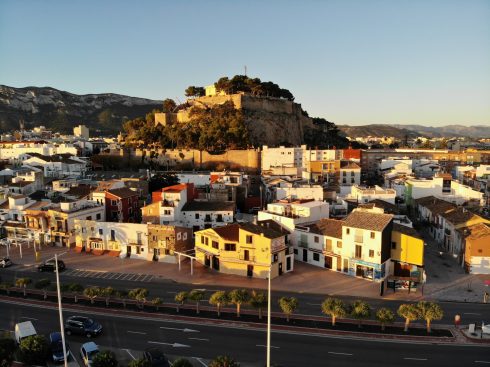

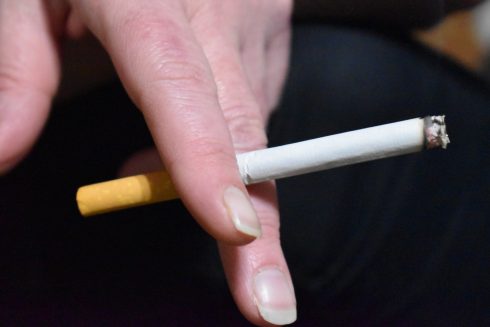
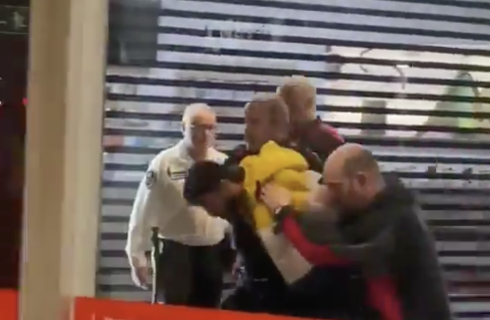

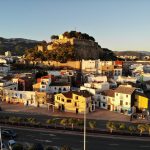
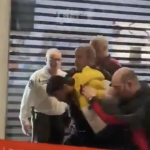
“He added: “There just isn’t enough manpower or money and if the northern European countries really want to try and stop this flow they are going to have to send a lot more money down from Brussels. That is the bottom line.”
What so the authorities can trouser it?
Thats an original title, very creative. Hacks.
Camorra bosses have been using that title for decades. The hacks didn’t create it. Most hacks plagiaraise their work from others.